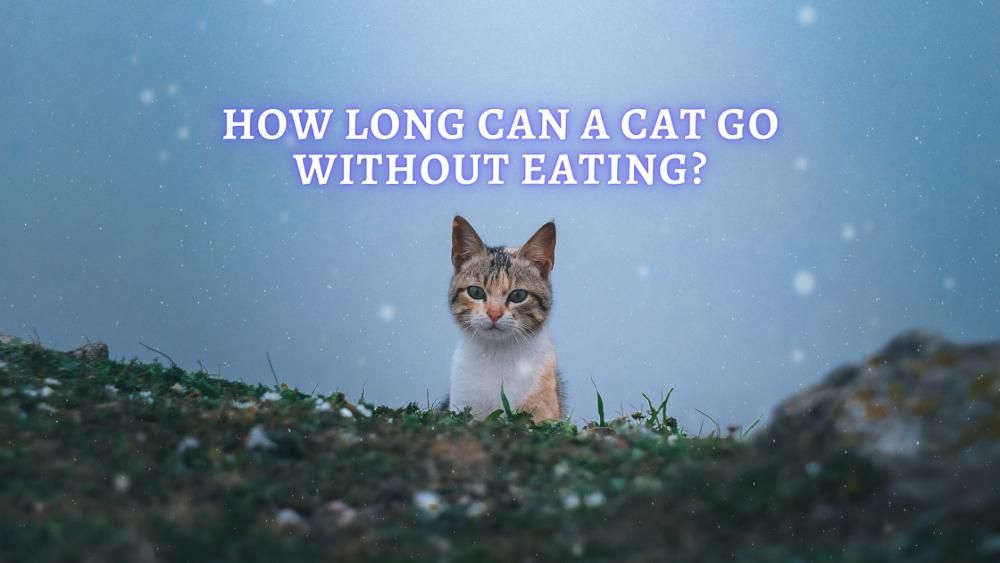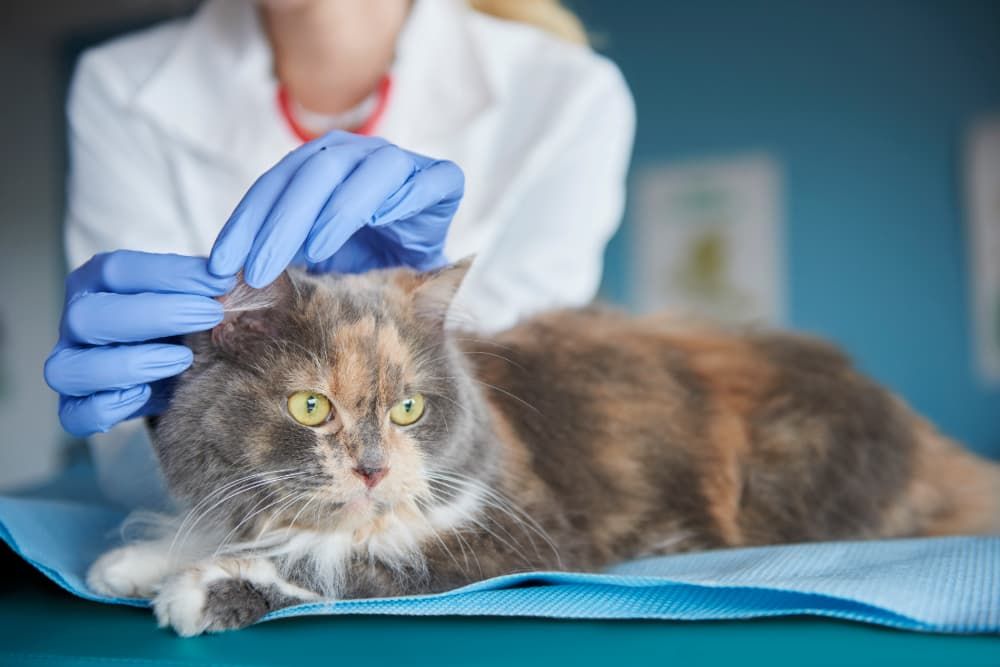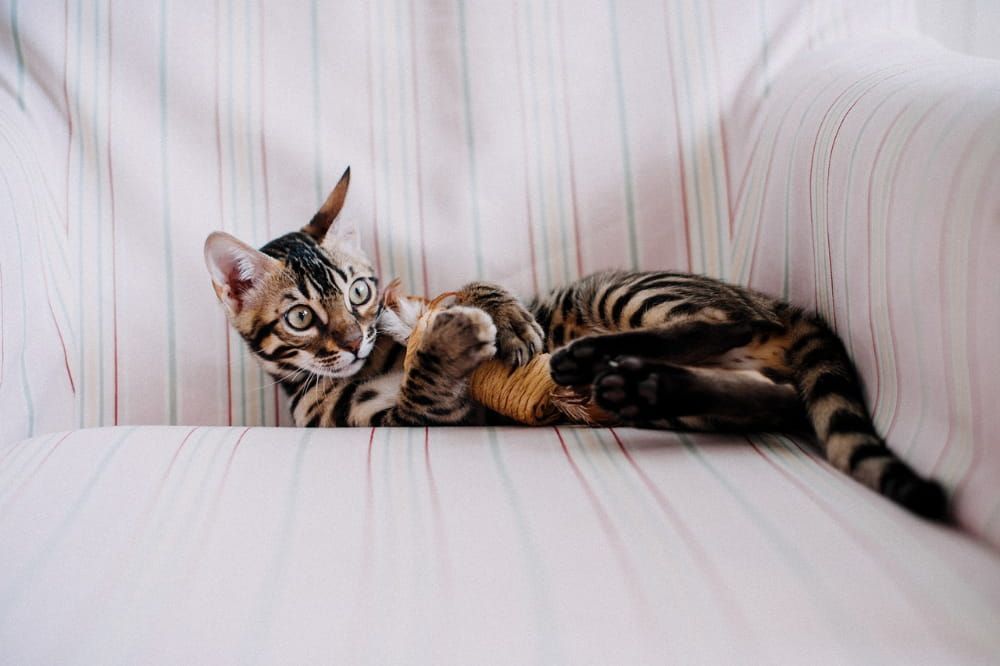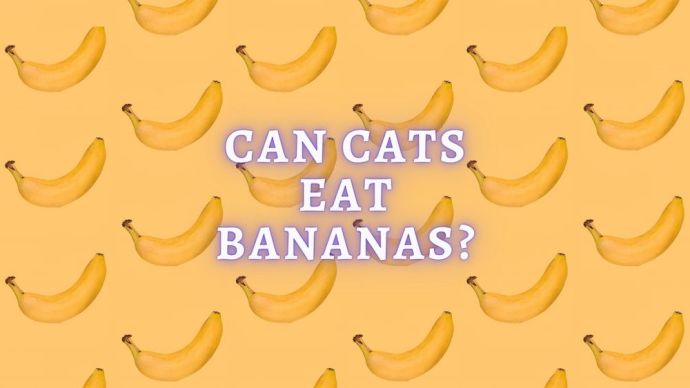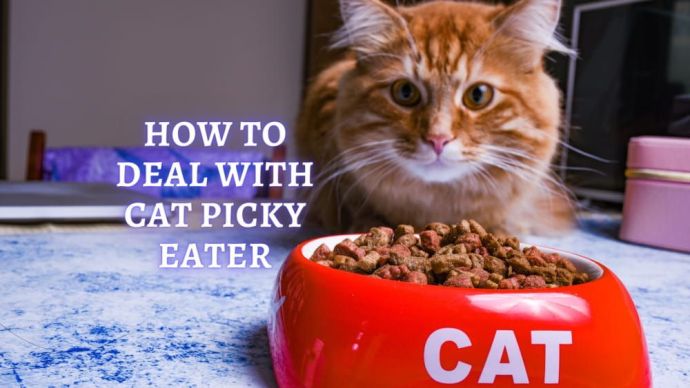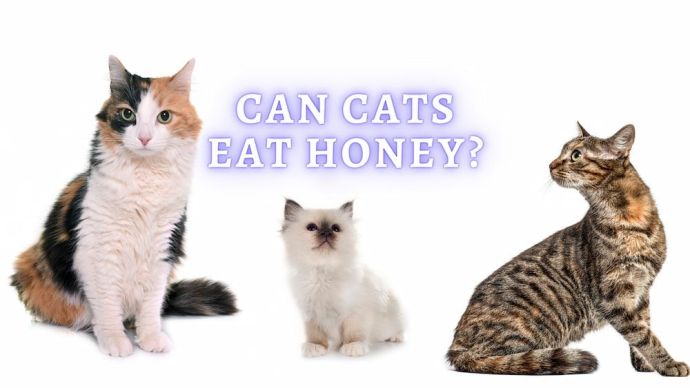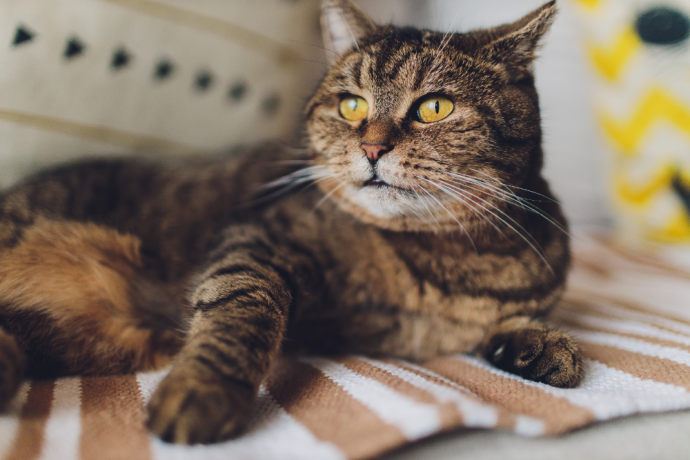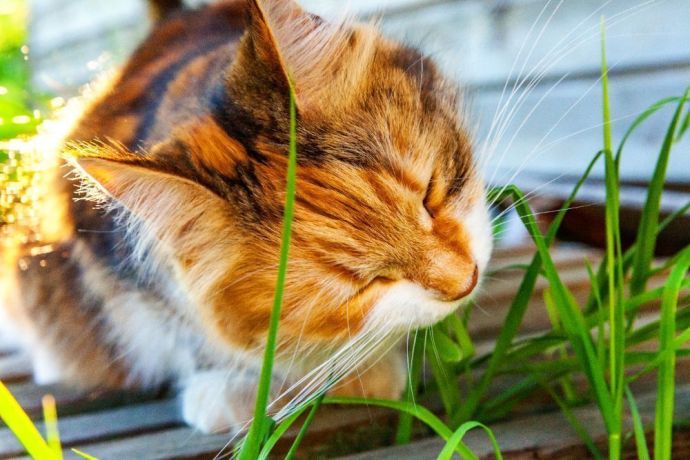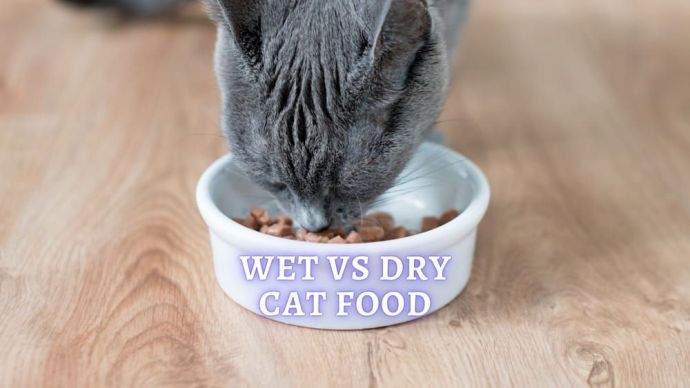Cat Not Eating: How Long Can Cats Go Without Food?
Written by:
Author: Vicki Smirnova
Vicki Smirnova is a professional writer and editor who adores animals and helps readers get along well with their pets. She has been working in digital media for more than 5 years and has great experience writing content about lifestyle, including pets. Vicki specializes in dog health and nutrition, cat feeding, dog training. She is an aquarium lover and is passionate to write about fish care at home. Also, Vicki headed several websites and worked as a news editor.
View all 245 articlesLearn about our editorial process and veterinary review board.
Reviewed by:
Veterinary review
by Dr. Amanda Jondle
Dr. Amanda Jondle is an experienced veterinary who helping pets and educating clients through writing and editing articles to inform pet owners on how to best care for their pets. Amanda graduated from Iowa State University College of Veterinary Medicine. She and her husband currently have 4 rescue dogs and 3 cats of their own and are often fostering pets with health issues until they find their forever homes.
View all 7 articlesLearn about our veterinary review board
Viewed: 331
Updated on: 01/03/2023
Cats have evolved in quite harsh conditions. In the wild, to obtain food, they had to fight every day. The hunt might have ended with dinner, or it might have left the cat hungry. Therefore, they have adapted to short periods without food.
When asked how long a cat can go without food, veterinarians answer differently. No special experiments have been conducted on this issue, which means that it is worth paying attention to real cases that have received documentary confirmation.
One such case occurred in 2007 and became widely known. On May 7, a very emaciated (but alive) cat was found inside a cargo container in a US port. During clarification of the circumstances of the cat’s appearance, it became clear that the container was loaded on the ship on April 3 in Shanghai. Thus, the unfortunate animal spent more than a month in captivity without food or water.[4]
The veterinarian who examined the cat advised that it be fed with small portions of food and drink. The fate of the cat is unknown, but the fact of such endurance is impressive.
Of course, this does not mean that every cat can starve for a month without health consequences. It is impossible to predict exactly how long a cat will last without food. When a cat refuses to eat voluntarily, its owner should contact a veterinary clinic after 1-2 days, especially if it does not drink water.
READ MORE: Best Food for Bengal Cat (Vet Approved Review)
Why has my Cat stopped eating?
If your cat is indifferently turned away from their full bowl, you should carefully analyze the pet’s behavior. It is quite possible that the pet just ate too much the day before and did not have an appetite. You may face cat moodiness, and the animal is simply manipulating you, begging for the food that it wants.
There are many reasons why a cat might be refusing food, from stress, illness, to other factors:
1. Stress
Cats become very used to an established order of things. Any changes in its habitual way of life and environment negatively impact the animal’s condition. Moving, repairs and prolonged absence of the owner and guests’ arrival can cause stress in the pet, causing it to refuse to eat or drink for a while (its behavior may also change, becoming sluggish, apathetic, or aggressive). But at the same time, cats quickly adapt to anything new, so much a forced hunger strike usually does not last long — it will not take even a few days, as the pet will again enter its usual rhythm and lifestyle.
2. Sexual activity or the first half of pregnancy
A sign of pregnant is a change in their appetite. This depends on the individual cat. Your queen could suddenly go off her food and refuse to eat.
3. Heat
When hot, cats experience obvious discomfort and consume a lot of fluids, and their appetite, on the contrary, decreases. In and of itself, this condition is not dangerous, but only if the cat has constant access to drinking water.
READ MORE: Cat is in Heat: How to help a Cat in Heat?
4. Illness
Cats are very susceptible to various kinds of diseases and illnesses. Symptoms of diseases are diverse, but common to most of them is the refusal to eat and drink. It is worth noting that this condition requires mandatory veterinary care, as it threatens to severely deplete the pet and may cause its death. Common diseases such a kidney disease, liver disease, gastrointestinal disease, infectious diseases (viral, bacterial, or fungal), heart disease, respiratory disease, cancer, dental disease, urinary disease, and more.
5. Dental problems
Stomatitis, gingivitis, stomatitis, and tartar are common reasons a pet refuses to eat and only drinks water, as the act of chewing is painful and uncomfortable.
6. Worms
Intestinal parasites cause the deterioration of health. The animal must be immediately treated for parasites; otherwise, it is fraught with extremely adverse consequences.
READ MORE: What to expect after Deworming a Cat
7. Digestive issues
Cats often suffer from indigestion due to licking their fur, gradually accumulating in the stomach (as hairballs). Sometimes, the fur gets into the intestines and causes an obstruction; as a result, the cat will refuse to eat and will vomit frequently.
8. Medication side effects
After a surgery requiring anesthesia, a cat may not eat for 1-2 days since drugs that are used for anesthesia suppress and slow down physiological processes and functions. Its coordination of movements may be disrupted, and its appetite may decrease.
The period of recovery from anesthesia can take up to 8 hours. The appetite may also disappear if it is given medications: some affect the sense of smell and, accordingly, the appetite. If this is the reason, then over time, the animal’s interest in food will be restored. If this does not happen, You should consult your veterinarian.
9. Pickiness
A cat may refuse new food because of its taste or smell. In this case, it is recommended to return to the products that it likes or offer a diet designed specifically for picky animals. On the other hand, if the pet’s diet has not changed for a long time, it may want variety. Introduce it to a food with a new texture or taste.
READ MORE: How to Deal With Cat Picky Eater
10. The wrong bowl
A cat’s bowl can be uncomfortable, unstable, dirty, or made of a bad-smelling material. These circumstances can distract the animal from eating. Such dishes should be replaced.
11. Feeding place
If the food bowl is located in a place where it is noisy, busy, or cold, the cat may find this unappealing and avoid eating in this area. Move the bowl to a more comfortable place where it is warm and there are no drafts or unnecessary fuss.[1]
READ MORE: The Best Automatic Cat Feeders
READ MORE: How to Get Sick Cat to Eat: Vet Advice
What happens if a Cat doesn’t eat?
What happens in the human body during fasting is well understood, and cats’ physiology is not much different. First, the reserves of glycogen that accumulate in the muscles and liver during normal nutrition are consumed. This is one of the main forms of storing nutrients in the body. Glycogen consists of interconnected glucose molecules and is quickly broken down, giving the body energy and maintaining normal blood sugar levels.
A smart body quickly “understands” that it is dangerous to spend all glycogen (and its reserves usually do not last more than a day). Therefore, another process starts obtaining energy from fat depots. When fats are broken down quickly to supply energy and nutrients to the cat, it overwhelms the liver. The liver starts to store fat in its liver cells, which hinders its ability to function properly. This in turn, causes liver failure. This is called Fatty Liver Disease, also known as Hepatic Lipidosis. It is the most detrimental in an obese or overweight cat that has been anorexic for 3-4 or more days. It can be fatal if not quickly treated.
It seems that the thicker the cat’s fat layer, the more likely it is to survive. However, this is not always the case. Serious obesity, especially lasting for years, may lead to systemic disorders in the body, making it more difficult to withstand extreme stress and contribute to Fatty Liver Disease.
Therefore, it is reasonable to maintain the pet’s normal weight without deviations in one direction or another.
As soon as glycogen and fat run out, the most dangerous phase of fasting starts: the body begins to take energy and break down protein from its own tissue. First, the muscles are used, then the internal organs, which sometimes leads to irreversible changes. Normal metabolism is disturbed, and so-called protein-free edema occurs. When this last resource is exhausted, the brain ceases to receive blood, resulting in coma and death.
RELATED ARTICLE: Best Cat Food for Weight Loss
How can I get my cat to eat?
If the pet refuses to eat for more than two days, it is necessary to determine the reason for the hunger strike and try to eliminate it, if possible. During this period, it is essential to take the following measures:
- The first measure should be to take the pet to see a veterinarian to determine why it is not eating.
- Ensure constant access to clean drinking water.
- Arouse the cat’s appetite by offering it a strong-smelling delicacy.
- Prepare your cat’s favorite dish and heat it to a temperature slightly above room temperature.
- Feed the pet with a spoon or the palm of your hand. Give a kitten warm, liquid food through a syringe without a needle — for kittens, starvation is especially dangerous.
How long can cats go without food?
Because an anorexic cat for any amount of time is abnormal, if a cat goes over 1-2 days without eating, they should be seen by a veterinarian. One should be especially cautious with older cats and kittens since even going a day without food can be detrimental. Tiny kittens can not stand this: without food, they usually die after a day.
Of course, there is no guarantee that it can survive without food for any particular time. Therefore, it is definitely not worth experimenting. Even if you leave the house only for the weekend, it is better to ask for help (a reliable person or, if traveling with your cat, hotel services, which today operate almost everywhere).
Lack of water is even more dangerous – a cat can lose up to 50% of its weight, but the loss of even 10% of its body’s fluid leads to fatal consequences.
The maximum period during which a pet can live without water is 5 days; however, the amount of time largely depends on environmental conditions and can significantly decrease in hot weather. When leaving the house, always ensure your family friend has water. If you aren’t able to regularly provide freshwater, purchase a kitty water fountain, which is constantly replenished.
A cat’s prolonged refusal to eat or drink will have negative consequences:
- Significant weight loss.
- Reduction of fur quality— the formation of tangles, bald spots, fur loss, untidy appearance.
- Vision impairment.
- Problems with the gastrointestinal tract, kidney issues, vomiting, constipation, diarrhea.
- Reduced immunity, frequent colds and respiratory diseases.
- Fatty Liver Disease leading to liver failure.
- Muscle loss.
- Poor energy level.[2]
How long should you wait to see the vet?
Pay attention to how much your pet does – and does not – eat. If it doesn’t have an appetite for less than a day, It might be nothing to worry about. However, be careful with small kittens: for them, such a period of starvation may be deadly.
For longer than 1-2 days, take it to a veterinary clinic, especially if they are showing any other signs of illness.
This must be done immediately in the following situations:
- Refusal to eat for more than two days.
- Signs of dehydration: greasy-looking fur, warm and dry nose, general lethargy and apathy.
Physical signs of a life-threatening emergency
If the cat has one of the following symptoms, immediately take it to the veterinarian:
- Lethargy.
- Fever.
- Dehydration.
- Vomiting.
- Diarrhea.
- Constipation.
- Difficulty (or absence of) urinating.
- Fluid discharge from the nose and/or eyes.
- Breathing with an open mouth (like a dog).
These symptoms may indicate a very dangerous disease, injury, or damage to the internal organs. The most important thing is to keep track of whether or not the cat is drinking. Refusal of water is a terrible symptom that leads to severe dehydration and can even cause death. In such a situation, it is essential to quickly take your зуе to a veterinary clinic to diagnose and detect the true cause of the its condition. Self-medication is strictly prohibited![3]
FAQs
Is it okay if my cat doesn’t eat for a day?
If your furry friend doesn’t eat anything for one day, check to see if there have been any changes or anything bothering the cat. It may be having an off day. As long as it returns to eating normally the next day, it will likely be OK.
What happens if a cat doesn’t eat for 24-36 hours?
If your pet does not eat for 24-36 hours, even with normal water consumption, it is recommended to check with a veterinarian.
What happens if a cat doesn’t eat for 3 days?
If your cat does not eat for 3 days, it may indicate a disease of the gums, teeth, digestive system or genitourinary system. Immediately contact a veterinarian – he/she will conduct an examination and necessary tests. In this case, the vet will provide the best correct recommendation or prescribe necessary treatment.
Can a cat starve itself to death?
Physiological processes and instincts force organisms – including cats – to eat. Therefore, the pet will not be able to intentionally starve itself. If you find that your cat eats little or nothing for several days, it is best to consult a veterinarian to determine what is wrong and why the pet is not eating.
Article Sources:
- “Diet and Skin Disease in Dogs and Cats” Tim D. G. Watson Author Notes, The Journal of Nutrition, Volume 128, Issue 12, December 1998, Pages 2783S–2789S, academic.oup.com/jn/article/128/12/2783S/4724467
- Spofford, Nathaniel. “A Moderate Fat, Low-Energy Dry Expanded Diet Reduces Gain in Body Condition Score When Fed as Part of a Post Neutering Weight-Control Regimen in Growing Pet Cats.” PubMed Central (PMC), 1 Jan. 2014, ncbi.nlm.nih.gov/pmc/articles/PMC4473151/.
- Bennadi, Darshana. “Self-Medication: A Current Challenge.” PubMed Central (PMC), 1 Dec. 2013, ncbi.nlm.nih.gov/pmc/articles/PMC4012703/.
- Duncan, Josh. “Cat Survives 25 Days with No Food Trapped in Shipping Container Travelling from China to BC.” KelownaNow, kelownanow.com/watercooler/news/.
 Cat Care Why Does My Cat Attack My Legs? 10 Reasons Why and What To Do About It (Vet-Approved Advice)
Cat Care Why Does My Cat Attack My Legs? 10 Reasons Why and What To Do About It (Vet-Approved Advice) - 45566
- 21
 Cat Veterinary Tips Cat Stomach Gurgling: Vet Advice on Why is Your Cat Stomach Gurgling?
Cat Veterinary Tips Cat Stomach Gurgling: Vet Advice on Why is Your Cat Stomach Gurgling? - 35340
- 4
 Cat Veterinary Tips My Cat Lost its Voice: Can Cats get Laryngitis? (Vet Advice)
Cat Veterinary Tips My Cat Lost its Voice: Can Cats get Laryngitis? (Vet Advice) - 23247
- 13









